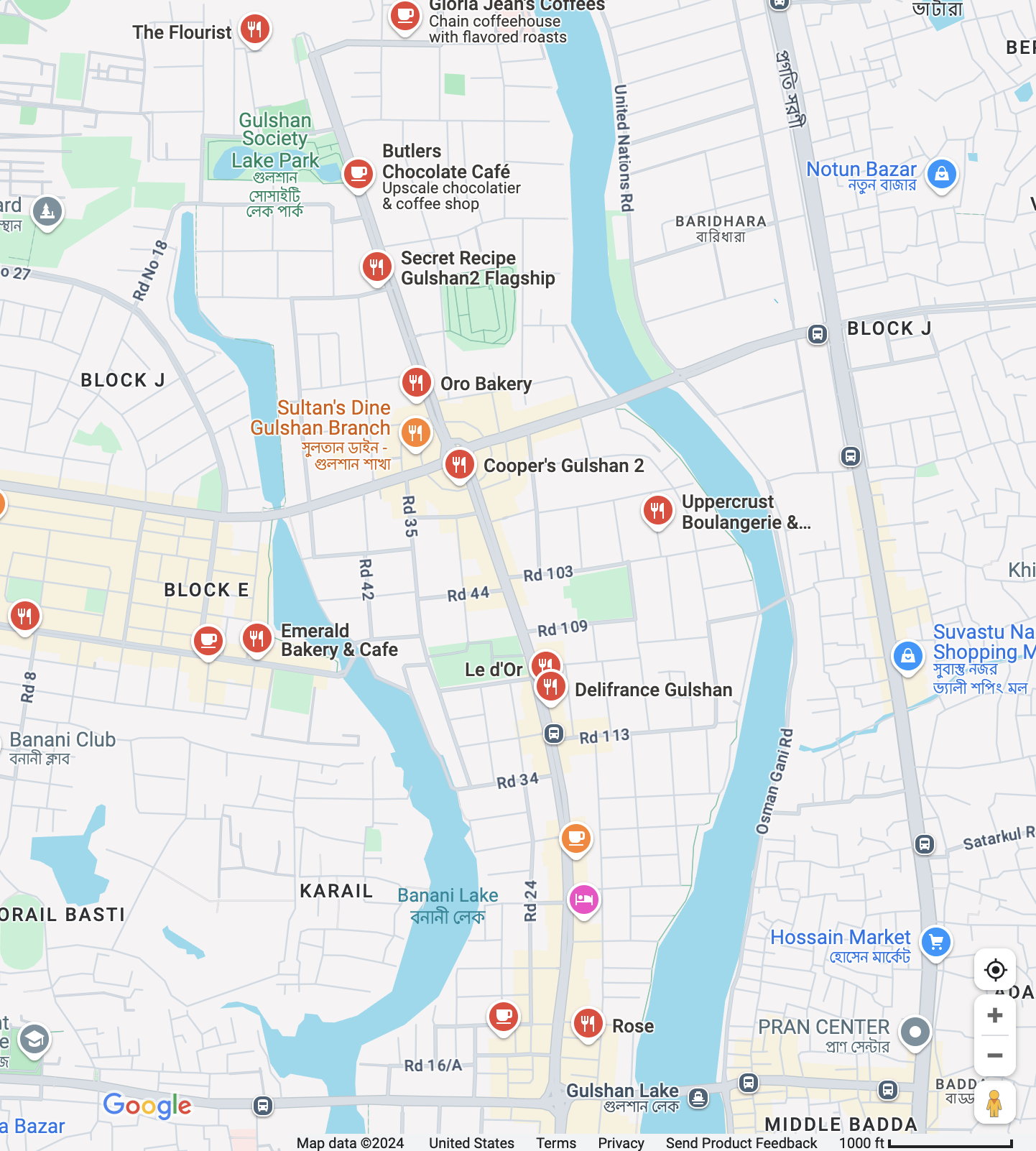Every time I am in Dhaka, I am surprised by the sheer density of cafes and bakeries in the posh areas. Since they all sell practically the same menu of pastries and coffee drinks at similar price points, I was stumped at how each business thinks it could attract and retain customers.

My best theory so far is that cafes and bakeries operate in a monopolistically competitive market and their prime differentiation strategy is offering Third Places. The market for croissants is really a market for subleasing commercial real estate to individuals. For under $5 or 500 taka— a nontrivial sum, to be sure, which is why they operate in posh commerical areas— a customer can take a break from the intensity of the city, maybe catch up with others. Then to switch it up next time, they could check out the space next door.
If I’m right, then this market could be headed in one of two broad cultural directions:
- The American Starbucks culture: Customers decide they would also like convenience in addition to real estate. A successful operator like North End decides they can offer good service and consistent offerings and aggressively opens locations to capture demand. Smaller businesses shut down and cafe/bakery culture homogenizes.
- The Australian coffeehouse culture: I think this is the most likely outcome. Customers decide they like the variety in spaces and support all businesses roughly equally. Businesses decide neither the economy nor demand is predictable enough to plough capital into long-term investments like real estate and service equipment that could destroy competition. There will be some turnover as stagnant businesses close and new ones enter but there will be enough demand to keep the cycle going.